Career Stages
Born in 1941. Studied at the University of Helsinki, major subject psychology. 1963 BA, 1965 MA, 1969 PhD. 1956 freelance journalist. 1965 junior faculty at the University of Tampere. 1967 head of research, Finnish Broadcasting Company. 1971 Professor of Journalism and Mass Communication, particularly radio and television studies, University of Tampere. 2009 Professor Emeritus. 1971-76 Member, Unesco Panel of Consultants on Communication Research. 1972-1988 Vice-President, IAMCR. 1976-1990 President, International Organization of Journalists (IOJ). Honory-Professor at Saint-Petersburg State University (2008) and Moscow State University (2009). Married to Ullamaija Kivikuru, PhD, Professor Emerita of Journalism at the University of Helsinki, two children (born in 1974 and 1979).
Could you tell me something about your parents?

Kaarle Nordenstreng (source: private)
My father was an officer in the Finnish army, fighting in two wars against the Soviet Union. After the war he quitted the army and served in the Helsinki city administration. He was also a hobby tourist guide, leading groups both in Finland and abroad. For example, I visited the former Leningrad in the Soviet Union with one of his groups.
What was your father’s background?
He came from an aristocratic family of Finnish origin despite the Swedish or German sounding surname. His father was principal of a province in Eastern Finland. One of his forefathers was governor there. So on his side of the family we had a sort of high society tradition which was reflected in a way at home.
What about your mother?
She came from a small entrepreneur’s family in a village in South-Eastern Finland. My parents were not highly educated but they represented a bourgeois culture.
Did they have any university degrees?
No. My mother married as a teenager. My father went through the military academy but not to the highest level. He would not have been qualified for becoming a general, for example. He was a major by rank when he left the army. So my background was neither working class nor peasantry. It was upper middle-class to lower upper-class, I would say. Right wing and very nationalistic, I should also say.
Were there any connections to political parties?
My mother was a member of the conservative party. My father was never active in a party. Coming from the army, he certainly sympathized with the Germans, our war-time allies, but he was not an active fascist. He was a fairly broad minded and humanistic thinking person. So I can’t blame my family as being iron heart right wing (laughing). It was a soft bourgeois home.
What about your first professional dreams?
The first serious one was perhaps engineering. As a teenager I was interested in constructing radios.
Like Osmo Wiio.

Vilnius University 1999, Faculty of Communication. Local students and professors plus Cees Hamelink (third from left), Kaarle Nordenstreng (8), Annabel Sreberny (9) and Jan Servaes (right) (source: private archive Jan Servaes).
Yes. He was more advanced than me. My first contact with Osmo was actually in this area. I sought some advice from him when I was working according to his books (cf. Meyen, 2012, p. 1867). Osmo Wiio was an important role model for kids interested in electronics.
What happened to your dream of becoming an engineer?
Roughly at the age of 15 it turned out that I was more interested in Finnish language and humanities.
Do you still remember why you chose psychology as your university major?
I’m not quite sure. Perhaps it was part of my identity seeking. In school I hadn’t studied psychology at all. I was on the so-called mathematical track which had no option to study psychology. Therefore, I did not know much about it but as a teenager I got interested in graphology; how to tell about the character on the basis of your handwriting. That was my first window to personality.
At least you got inspired.
Yes. My first approach to psychology was humanistic or soft. In the long run, I was rather disillusioned when I noticed that it is very much about behavioralism and statistical methods. This was first very far from my interests but ironically I gradually turned more and more in that direction. My dissertation was in the area of psychological perception (Nordenstreng, 1969). It was a quite methodologically oriented research measuring how people cognitively construct their understanding of sound.
As a student, you had the chance to interview Carl Gustav Jung.
This exceptional possibility was part of my first year in psychology, yes. The interview is available on my website. It was recorded for the Finnish Broadcasting Company in 1961.
How would you compare the student Kaarle Nordenstreng with today’s students?
Well, it’s not a completely different world. All students are following the destinies of their own life stories and looking for something which is not yet clear and gradually opens up along the way of studies. That was the same with me. However, you have to remember that I always had two tracks in life since the age of 15.
Journalism as well, yes?
In 1956 I made my first stories for the Finnish young people’s radio. That led to fairly extensive freelance activities and partly also to fulltime activities which were pretty separate from the university path. Only later did those two tracks converge in my academic career.
Since when did you know that you wanted to become a communication scholar?

Moscow 1997: Denis McQuail, Patchanee Malikhao, Kaarle Nordenstreng (source: private archive Jan Servaes) (source: private archive Jan Servaes)
It was roughly the time when I was a BA and continued after one year in military service for a Master’s degree. After the MA I was offered to become a junior staff member at the University of Tampere. I served there for one year as an assistant. At least we called it that way. In English, it’s instructor, the lowest teacher position usually held by people who study for their doctorate at the same time. Working as a teacher, I realized that there is this field of communication research and I became more and more engaged in that. Therefore, it was natural that I joined the university full time later.
So, it was a combination of the position available and the teaching experience which led you to academia.
Yes, but it was also my research. I always had fantastic opportunities. I did not need to struggle and even apply to much of what I was offered. Life was setting the table for me. After the teaching year in the Finnish programme for journalism education and research I spent nearly a year in the States where I mainly worked for my doctorate. It was a fellowship at Southern Illinois University. I had a very pleasant semester there. After that I was travelling through the country visiting various schools with support of the Finnish Broadcasting Company.
You did work there as the head of audience research.
That was immediately after that trip. I worked there from 1967 to 1971. During that time I also finished my PhD (Nordenstreng, 1969).
In the US, you had the chance to meet all the famous colleagues (Nordenstreng, 1968).
The report published in Gazette was my first scholarly article. The original material of my interviews with Lasswell and Berelson is still available on my website as mp3-files. The article became well-known especially since I published it as a mildly critical view of an European researcher. In 1968, I wasn’t very radical yet because I identified myself pretty much with the mainstream American communication research at that time. Only later did I distance myself to that. Perhaps this article is in the border zone between affirmative enthusiasm and a critical look at the one-sidedness and even ideological underpinnings of that tradition.
All of the biographical notes about you name four research areas: communication theory, media ethics, international communication, and journalism. Is there any link between those areas or a hidden agenda?
Historically, the first one was communication theory. When I started in 1971 as Finland’s youngest professor, my ambition was to make some sense out of communication theory. That’s why I wrote an Introduction to Communication Studies. Second was international communication. I became involved in that topic already in the late 1960s. Most famous is the TV flow study (Nordenstreng & Varis, 1974). Media ethics and journalism came a bit later.
Osmo Wiio identified your department at Tampere with strong leftist ideology (Meyen, 2012). How do you recall the 1970s in Finland’s academic field, especially in the communication community?

Moscow 1997: Denis McQuail, Patchanee Malikhao, Kaarle Nordenstreng (source: private archive Jan Servaes)
That’s a question which leads to partly contradictory pictures. The vulgar view is what you mentioned and which Osmo Wiio also often refers to: There was this red Tampere and a white Helsinki. That’s a very simplistic view. First of all, we have to understand that throughout the late 1960s and the 1970s all social sciences were dominated by neo-left approaches. At least in the younger generation there were very few scholars who wanted to depart from that mainstream. Politically, it was called progressive and democratic whereas the antithesis was conservative, old-school and affirmative.
So journalism and mass communication were part of a bigger stream.
At Tampere, we were by no means an exception. It was the same in Helsinki including the communication department before Wiio came there. Actually, their curriculum was in some respects redder than in Tampere since we had to take into account what the media industries were expecting from a journalism department. Therefore, we also had an emphasis both on technocratic skills and more mainstream scholarship.
If there was no big difference between Tampere and Helsinki, where did the vulgar view of red versus white come from?
It was more or less an image of these two schools which was perpetuated in the political discourse. Politically, Finland was a fairly polarized country back then. Therefore, it was easy to label even academic institutions that way. Tampere University had that red label in all areas, more than Helsinki. Certainly I have to admit that I was advocating a left-wing orientation but students from the other wing had also a legitimate place in our community. And we had also some teachers with right-wing orientations.
How would you define your left-wing orientation in the 1970s?
I always defined myself as an independent leftist. I was never a member of any party but I did cooperate with both social democrats and communists – both kinds of communists. In Finland, we had a very clear Euro communist as well as a strong Stalinist orientation. I was often labelled as a Pro-Stalinist since I never dissociated myself from them in public but I didn’t do that for the Euro communists or the social democrats either. I also kept doors open to the Center Party and even to the Conservatives.
Beginning in the 1970s, you were very active in IAMCR and IOJ. What was your most important goal in these two organizations?
In IAMCR since 1966, it was part of my mission to promote communication research in an ecumenical way. Building bridges between East and West was Finnish foreign policy. I was particularly happy to see that IAMCR did bring together Eastern and Western scholars as well as scholars from the developing countries. IOJ was a totally different window that was opened to me in 1976. The presidency there was different from IAMCR. It was more a political mission.
The socialist countries planned getting you to become IAMCR president in 1972. Do you still remember why you supported James Halloran in Buenos Aires?

Emil Dusiska (source: private archive of Michael Meyen, loan of Karl-Heinz Röhr)
I was already convinced of him in 1970 at the conference in Konstanz. To me, Halloran represented my ideal of scholarship. He was progressive and innovative. Politically, he was Labour oriented. I thought he had both the proper credentials and the age to become a president. I was just 31. I couldn’t consider that idea seriously. So I tried to convince Emil Dusiska and his colleagues that Halloran is okay and not somebody to be suspicious of. It was almost part of the Eastern habitus to be suspicious of people in the West. For some reason, I had their confidence. Halloran did not. They took him as a potential dissident or whatever. However, he soon changed that perception because he took them seriously and tried to keep the East-West balance.
According to the files in Leipzig’s university archive, the Eastern fellows were especially suspicious about their West German colleagues like Otto Roegele or Elisabeth Noelle-Neumann.
That is true. These two people were classified as rather conservative. On the other hand, in IAMCR the Eastern Europeans weren’t too dogmatic about people like Elisabeth and Otto. Maybe they didn’t like them as candidates for power positions. But in general, I would have been even more critical than the colleagues from the East. They took a more diplomatic approach to Western conservatives.
How would you describe your relationships to the colleagues from Eastern Europe such as Yassen Zassurski or Emil Dusiska?
It was about mutual respect and moderate friendliness. We were not too friendly and not totally in trust. There was a certain lack of confidence but our relations were certainly closer than normally between colleagues from East and West at that time.
The 1974 IAMCR meeting in Leipzig was attended by a large group of students from Tampere, and Dusiska and you visited each other before that. What did you expect from this cooperation with Leipzig?
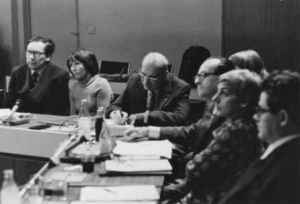
IAMCR in Leipzig, 1974. Very left: Yassen Zassurski. Also on the display right of the interpreter: Emil Dusiska, Werner Michaelis and Alice Bunzlova (Prag; Source: Privat Archive Werner Michaelis).
Actually, as you now put the question I’m not so sure about it. Perhaps it was a reflection of general diplomacy. In Finland, the political climate favoured those connections; it was the time around the Helsinki Process. The academic means were not so big for us after all. We didn’t learn so much new because we had already access to all Marxist writers. Nevertheless, going to the GDR or to Moscow was interesting. I would say it was more about a political affirmation of a general orientation than particular intellectual and academic discoveries.
The fascination of the Iron Curtain.
Maybe you can say so although this would be a simplification. But there was an element of that, yes.
From an Eastern perspective, you were seen as a fellow from the capitalist world. Did you ever fear to be misused by the socialist countries?
Of course I knew Lenin’s concept about the useful idiots but I never had big worries of that. I was pretty confident about serving an honourable course.
In Dusiska’s correspondence as IAMCR’s secretary general there is very little about academic quality but much on ideology and balance between progressive and bourgeois forces.
I more or less shared Dusiska’s view. You have to remember that we had this internal struggle within our own scientific tradition. In the social sciences as well as in the humanities we had a big burden of a conservative past. In the 1960s, this huge wave of change started. So we did classify colleagues and scientific streams according to the axis progressive-reactionary. In that respect I was not so far from Dusiska.
The GDR was not just interested in international recognition but in research dollars from Unesco as well. How realistic was that idea?
I don’t think that Unesco was an important financial funder to anybody. They rather were giving just their name and a bit of seed money and, then, expected a lot of resources from the recipient. Certainly I saw this game between Unesco and the GDR. They wanted to legitimize themselves and their research with Unesco but so did others, even we in Finland. We always considered it as very useful to have the Unesco emblem on this or that project.
In the early 1970s, Dusiska also tried to launch an IAMCR journal with money both from Unesco and East German authorities but didn’t get the go from the publication board. Do you remember what happened there?
Actually, I don’t remember. I have to revisit those things. Certainly, it must be at least a footnote in the history book of IAMCR which Cees Hamelink and I have agreed to produce.
Osmo Wiio dated the end of the Marxist influence on Finnish students back to the early 1980s (Meyen, 2012). Do you agree with him?
Not really. Osmo is a good friend of mine although we have had sharp public debates about Finnish communication policy. However, I think his testimony on the students’ movement is not very well informed. In reality, it was much more complicated.
What about your department at Tampere?
Of course, the fairly strong avant-garde approach of leftist students’ groups was at its peak in the mid and late 1970s and it went down in the 1980s, but there were various intellectual and political metamorphoses. The same is true for Helsinki although this would be comparing apples and oranges. Tampere was always a journalism program whereas Helsinki had from the 1980s its focus on general communication including organizational communication and PR. So Helsinki was by definition more related to the industry which naturally led also students to take a different orientation. All over the world, journalism tends to be together with writers and novelists among the most active parts of academia.
In an interview, Hanno Hardt complained that he was marginalized at Iowa because of his Marxist orientation (Meyen & Löblich, 2007, p. 116). What about your experiences as an academic from the Left?

Hanno Hardt (photo: Rüdiger Scheidges)
Certainly I was not marginalized. In the 1970s, I was rather swimming in a mainstream. If I would have been a conservative supporting the Vietnam War or corporations then I would have been a dissident. It was a totally different context than in Iowa.
Who is Kaarle Nordenstreng: a scholar, a teacher, the wanderer between East and West, Finland’s ambassador in the international community? What is the most important part of your academic life?
It’s hard to separate these various aspects. The ambassador role is important but I wouldn’t say it’s the most central. I also have a certain emphasis on research and theory. Maybe it’s not always visible outside although generations of students did read my textbook. I wanted to be known as an academic scholar of a certain field. So, scientist is a pivotal aspect of my identity. Second is the foreign policy mission and third the progressive political orientation. My overall ambition was to promote democracy and equality. I was even dogmatically against media policy solutions which would prefer corporate interests over ordinary people’s interests.
Would your father have liked you in that role?
We didn’t discuss those things too much until his death in 1978. By the way, there was a generation of Finns who came from bourgeois families and became radicals. Often the leading characters of the extreme left-wing students’ groups had right-wing homes. The usual explanation is that this was a revolt against their parents. In my case this is simply not true. I had always mutual respect with my parents. Therefore, I don’t think that my parents worried much about me. Perhaps there were some people who started to whisper to their ears, “Do you know about your child? He is almost a communist!” But I was never interrogated by them, “What on earth are you doing?”
Are there any scientists whom you would call a role model?
George Gerbner is definitely one. He was a scholar and also an activist with a clear social and political mission. His personality was fairly strong. If needed, he even pursued his objectives undemocratically. I appreciated this because I also wanted to have things done. So, George is my role model number one. Herbert Schiller was a collaborator of mine, editing a couple of books (Nordenstreng & Schiller, 1979; 1993), but I would not call him a role model. Perhaps Dallas Smythe is more of a model. As a progressive scholar he was very passionate. I was quite impressed by him but I don’t deny that I was partly influenced by Herb Schiller, too.
Looking back on almost 50 years in communication studies: Is there anything you are especially proud of?
Yes, I’m proud of two things from the 1970s. One is the TV flow study (Nordenstreng & Varis, 1974) and the other is this theory textbook which reflects a desire to understand the whole communication field.
Then again, is there anything that you would do differently today?
I’m not sure. One thing is perhaps the decision to run for IOJ president. I don’t regret it but in counting time and resources I wonder how much of it was worth it. Life is relatively short.
My final question goes into the far future: What will remain when Kaarle Nordenstreng is gone? What should remain if you could influence it?
I would like to be remembered as a bridge-builder, not just East-West but in the current world also North-South. We haven’t talked about the New International Information Order and so on, but I did have that as an important mission. What I have done in this area might have some legacy. Secondly, the study of the research field itself is of precious value. If I remain healthy and energetic I would certainly like to put more emphasis on that again.
References
- Hanno Hardt: Ein Gegenpol zum Mainstream. In: Michael Meyen/Thomas Wiedemann (Hrsg.): Biografisches Lexikon der Kommunikationswissenschaft. Köln: Herbert von Halem 2015. http://blexkom.halemverlag.de/hardt-interview/ (Datum des Zugriffs).
- Michael Meyen: Osmo Wiio: I’ve been interested in all kinds of communication research. In: International Journal of Communication Vol. 6 (2012), S. 1866-1872.
- Michael Meyen/Maria Löblich (Hrsg.): „Ich habe dieses Fach erfunden“. Wie die Kommunikationswissenschaft an die deutschsprachigen Universitäten kam. Köln: Herbert von Halem 2007.
- Kaarle Nordenstreng: Communication Research in the United States: A Critical Perspective. In: Gazette Vol. 14 (1968), S. 207-216.
- Kaarle Nordenstreng: Toward Quantification of Meaning. An Evaluation of the Semantic Differential Technique. Helsinki: Annales Academiae Scientiarum Fennicae 1969.
- Kaarle Nordenstreng/Herbert Schiller (Hrsg.): National Sovereignty and International Communication. A Reader. Norwood, NJ: Ablex 1979.
- Kaarle Nordenstreng/Herbert Schiller (Hrsg.): Beyond National Sovereignty. International Communication in the 1990s. Norwood, NJ: Ablex 1993.
- Kaarle Nordenstreng/Tapio Varis: Television Traffic – A One-Way-Street? A Survey and Analysis of the International Flow of Television Programme Material. Paris: Unesco reports and Papers on Mass Communication 1974.
Recommended Citation Form
- Kaarle Nordenstreng: Promoting Democracy and Equality. In: Michael Meyen/Thomas Wiedemann (Hrsg.): Biografisches Lexikon der Kommunikationswissenschaft. Köln: Herbert von Halem 2018. http://blexkom.halemverlag.de/iamcr-nordenstreng/ (Datum des Zugriffs).
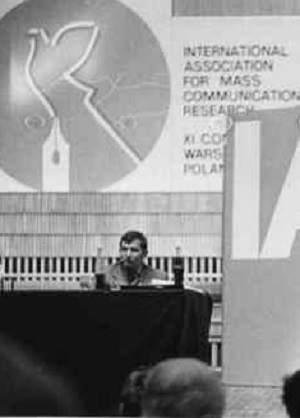
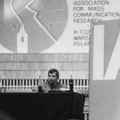
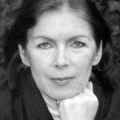

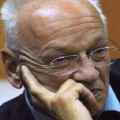
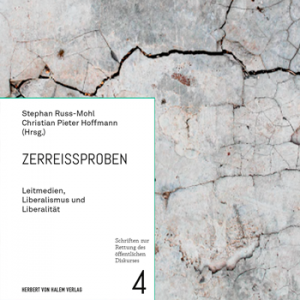
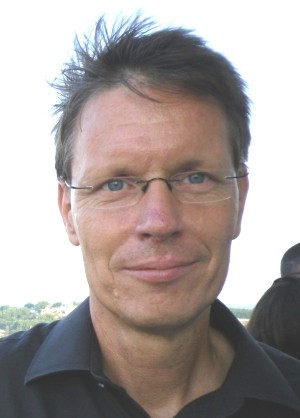 Michael Meyen is professor of communication at LMU Munich.
Michael Meyen is professor of communication at LMU Munich.

